Governor Phil Murphy • Lt. Governor Sheila Oliver
Translate Disclaimer
The following specialty vehicles have different processes for licensing and/or registration:
A motorized bicycle (moped) is defined by law as a pedal bicycle with a helper motor, electric or gas-powered, capable of a maximum speed of no more than 25 miles per hour on a flat surface. A moped has a maximum displacement of less than 50 cubic centimeters (cc)(no more than 1.5 brake horsepower).
Although mopeds resemble bicycles, mopeds are heavier and handle differently. They usually require longer braking distances to stop, don’t turn as quickly and are harder to pedal than bicycles.
 You can ride a moped utilizing your driver’s license.
You can ride a moped utilizing your driver’s license.We are required to capture a customer’s full face when taking a picture for a driver license or non-driver ID card; therefore we need to be able to see from the top of your forehead to the bottom of your chin. If you have a medical or religious need to wear a head covering in your photo, please advise the MVC staff at the agency camera station.
If a vehicle meets all the conditions as defined by law (see above) it may be registered as a moped.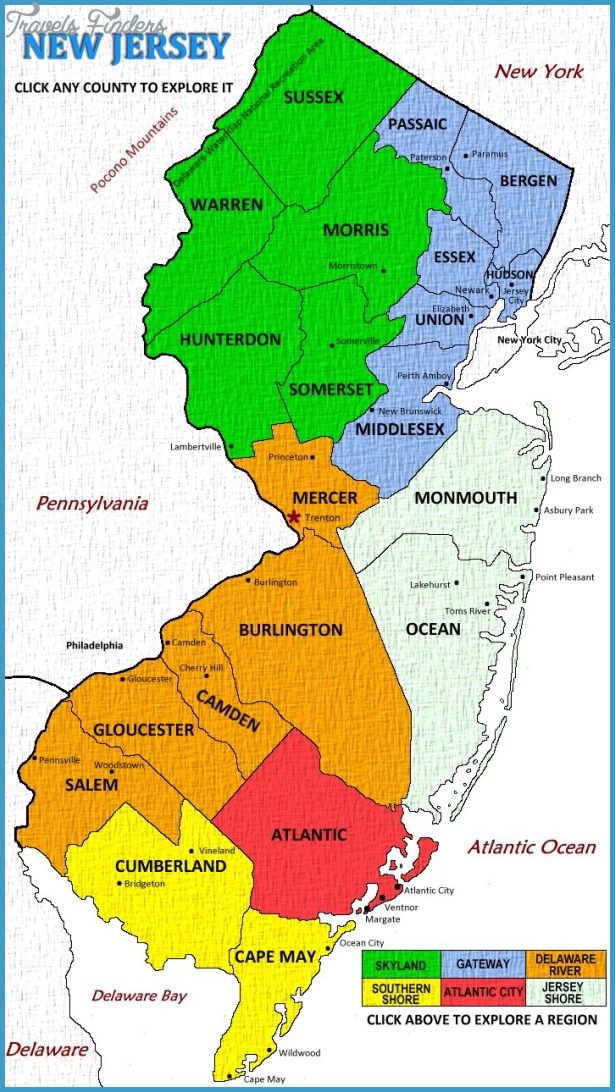 Vehicles without pedals that are less than 50 ccs cannot be registered as mopeds; rather, they must be registered as motorcycles, regardless of engine size.
Vehicles without pedals that are less than 50 ccs cannot be registered as mopeds; rather, they must be registered as motorcycles, regardless of engine size.
To register your moped, please visit a motor vehicle agency with the following documents:
Additionally, there is a sub-category called “Pocket bikes”.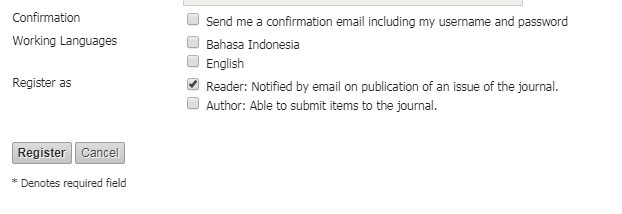 Pocket bikes are small-scale motorcycles with gasoline engines less than 50 ccs that can reach speeds of 45 mph. By definition from the state legislature, pocket bikes are considered toys.
Pocket bikes are small-scale motorcycles with gasoline engines less than 50 ccs that can reach speeds of 45 mph. By definition from the state legislature, pocket bikes are considered toys.
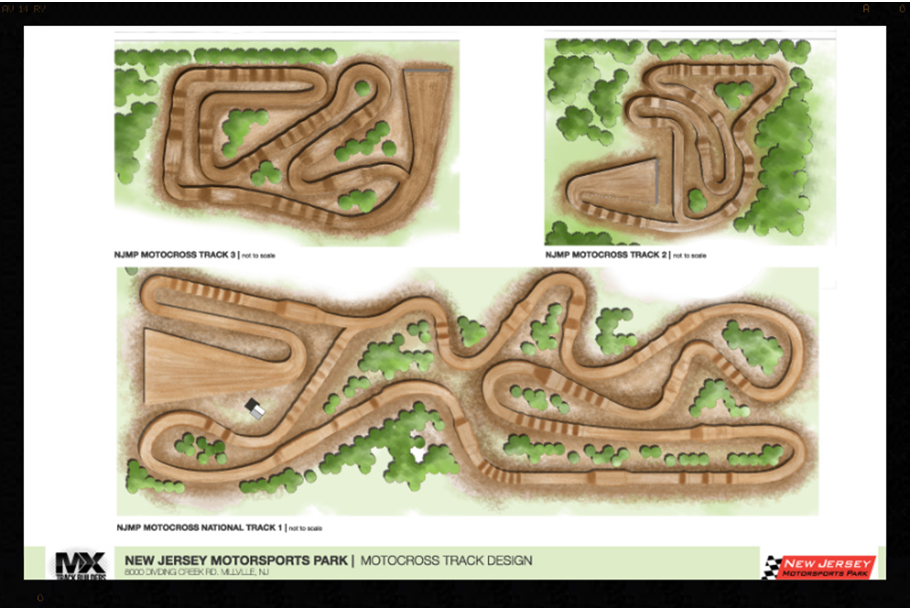
You do not need a permit or license to operate an all-terrain vehicle (ATV) in New Jersey. However, the vehicle must be registered and you must observe the following regulations:

*If you are under age 18 and only operate an ATV or dirt bike at licensed special events, you are exempt from the safety education course. You are also exempt if the ATV or dirt bike is used on public lands or waters or across a public highway as an incident to or in the actual performance of the operations of a farm that is adjacent to the public land and or water or public highway upon which the vehicle is being operated.
You do not need a permit or license to operate a snowmobile in New Jersey. However, the vehicle must be registered and you must observe the following regulations:
However, the vehicle must be registered and you must observe the following regulations:
 You can check with the park superintendent in advance for more details.
You can check with the park superintendent in advance for more details. To register your snowmobile, Dirt Bike or ATV, please visit a motor vehicle agency:
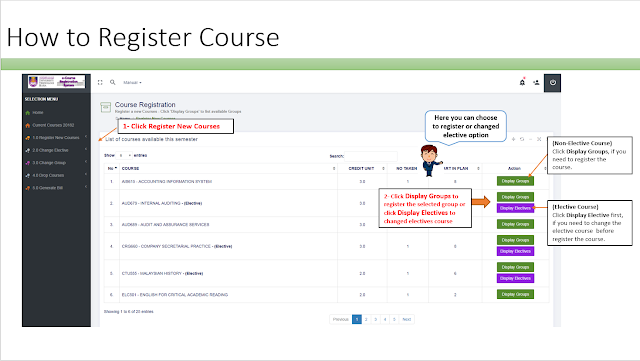
The registration expiration date for all snowmobiles, Dirt Bike and ATV registrations is September 30th.
An agricultural license (Class G) allows individuals between 16 and 17 years old to operate only those vehicles registered for farm use when the driver and vehicle are actively engaged in farming-related activities.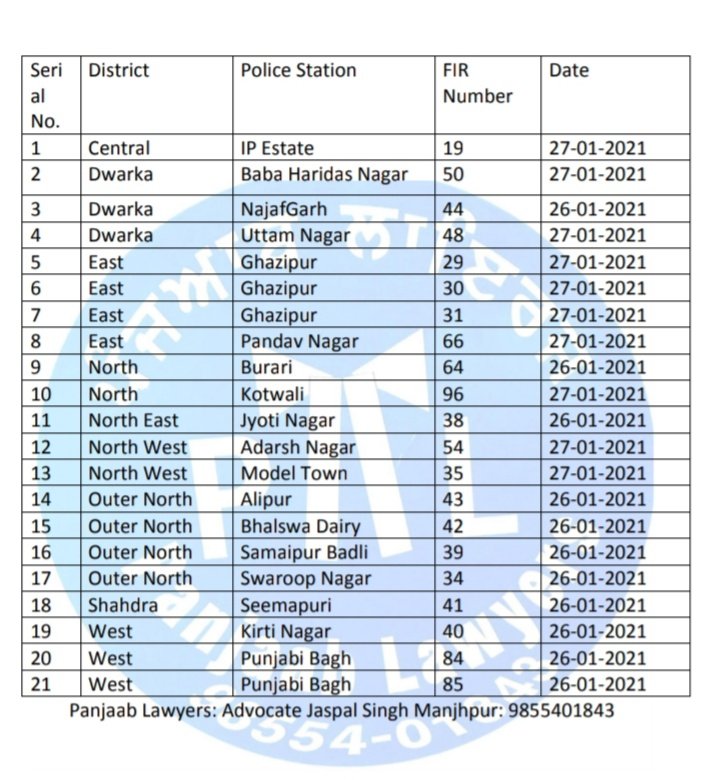 A basic driver license (Class D) can also be used to operate farming vehicles.
A basic driver license (Class D) can also be used to operate farming vehicles.
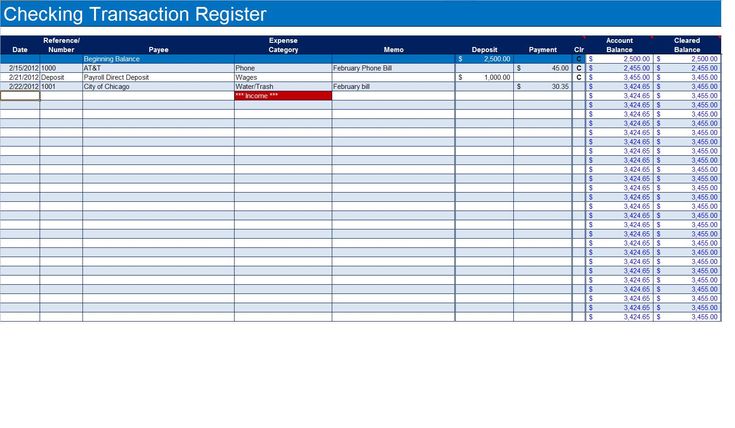
We are required to capture a customer’s full face when taking a picture for a driver license or non-driver ID card; therefore we need to be able to see from the top of your forehead to the bottom of your chin. If you have a medical or religious need to wear a head covering in your photo, please advise the MVC staff at the agency camera station.
Continuing in our series of articles analyzing the ATV laws in every state, which stemmed from this article, we are addressing the ATV laws in New Jersey in this article. It should also be noted that, while I am an attorney, I am not your attorney and am not giving legal advice. If you have questions, you should consult a local attorney.
You are required to register your ATV or UTV with a state motor vehicle agency if you want to ride in New Jersey on any public highways, lands, or
waters. However, you are not required to title your ATV or UTV in New Jersey.
To register your ATV or UTV, you must present proof of ownership in one of the following forms:

If the manufacturer’s statement or certificate of origin is unavailable, you can provide a notarized statement specifying from whom the ATV or UTV was purchased, the date of purchase, and the make, model year, and serial number. If the ATV or UTV was never registered, you will need a
notarized statement of ownership from the seller that details the length of time that the seller owned it and the reason it was never registered.
You are required to maintain adequate insurance on your ATV or UTV in New Jersey.
The following restrictions and requirements are applicable to youth ATV and UTV riders in New Jersey:

A permit or driver’s license is not required for the operation of an ATV or UTV in New Jersey.
Any operator or passenger on an ATV or UTV in New Jersey is required to wear a helmet. Helmets of course are the most basic safety tool you can use for an ATV and are absolutely necessary. We recommend this really great helmet, in terms of both value and quality.
ATVs and UTVs are not permitted on the public streets of New Jersey. Rather, they are only permitted for off-road use.
If you are riding on any private land in New Jersey, you must first obtain the written consent of the land owner.
Unfortunately, New Jersey just doesn’t permit ATV or UTV operation in most of the state. Legal use is mostly limited to private land a few designated riding areas where you can operate ATVs and UTVs. Some are privately owned and may have their own rules so be sure contact the location before you head out.
Some are privately owned and may have their own rules so be sure contact the location before you head out.
Mount Pleasant OHV Park is located at 2651 Petersburg Road in Woodbine. It is open on the weekends when weather permits and has free admission. This park is operated by the State of New Jersey and is open to ATVs, dirt bikes and snowmobiles. The park features a moto-cross style track and trails.
Validation of identification, current registration issued by the Motor Vehicle Commission and proof of insurance is required before you will be permitted to ride at this park. Non-residents must comply with the registration and licensing laws of their state or county of residence and conspicuously display the number issued by the state or county of residence.
Ready To RideReady to Ride park is located at 2594 Tilten Rd. in Egg Harbor Township. The park is sponsored by the Egg Harbor Township Police Athletic League.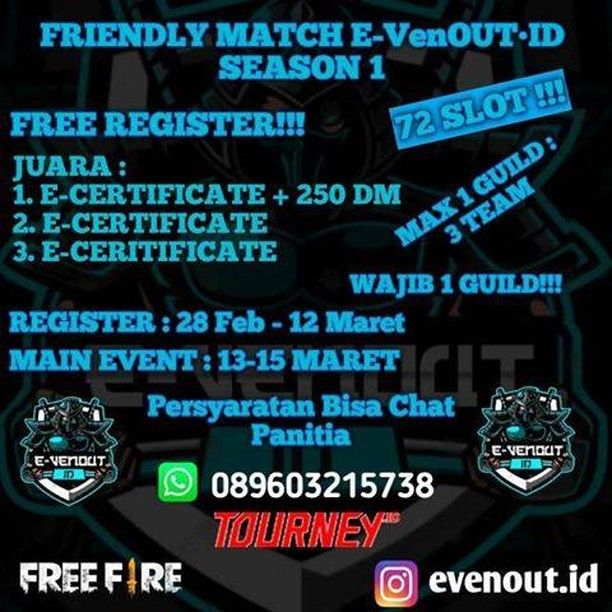 It is open daily from 10:00 AM to 6:00 PM. It is open to riders aged 6 and older, but membership is required.
It is open daily from 10:00 AM to 6:00 PM. It is open to riders aged 6 and older, but membership is required.
This park is a family friendly ATV, dirt bike and go-kart club. It features 30 acres of riding area that includes a half mile track for beginners, a 3 mile intermediate track, a 2 mile long advanced track, and a moto-cross track.
New Jersey Motocross Park Field of DreamsNew Jersey Motocross Park Field of Dreams is located at 1951 Buckshutem Road in Millville. It is open Wednesday through Friday from Noon-Dusk and Saturday through Sunday from 9:30 AM to 5:00 PM.
This ATV Park is a privately owned park that is only open to members. This park focuses on advanced moto-cross tracks, but also as trails designed for beginners to use.
Old Bridge Township Raceway ParkOld Bridge Township Raceway Park is located at 230 Pension Road in English town. This park is a privately owned commercial park designed primarily for beginning riders. You must provide proof of insurance, or purchase annual insurance on site, prior to riding.
You must provide proof of insurance, or purchase annual insurance on site, prior to riding.
Content
Share on social networks:
As a driver, you are required to be able to share the road with other road users, including: large trucks, motorcyclists, moped drivers, cyclists, rollerbladers and skateboarders, electric scooters, pedestrians, riders and others. You must know how to drive safely in the presence of other modes of transport and pedestrians and what rights each of the road users has.
Pedestrians are the least protected on the roadway. You have to be careful to avoid running into them.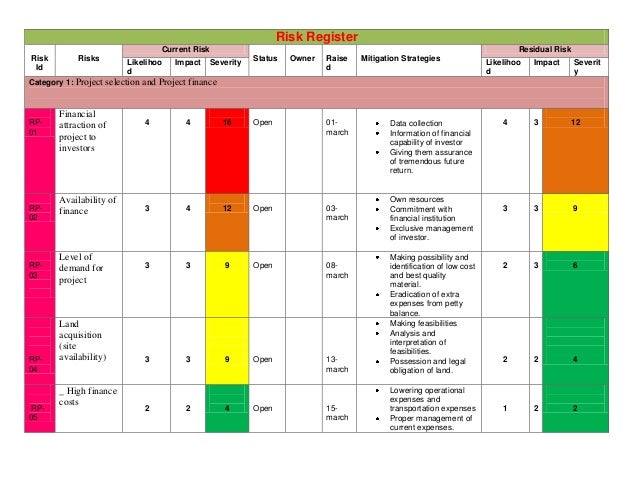
Be extremely careful in places where children may be: schools, playgrounds, parks, ice cream trucks. Children are harder to spot behind other vehicles and may be careless.
Whenever backing up, look back through the rear window and pay attention to pedestrians. Do not rely on the rear view mirrors alone when children may be around. Before backing out of the driveway, get out of the car and make sure there are no children behind it.
If there is no sidewalk on the carriageway, pedestrians must walk on the right side of the road, facing traffic. Watch out for pedestrians on the right as you turn right. Watch out for people on the other side to your left when making a left turn.
Pedestrians crossing the road at a pedestrian crossing or at an intersection have right of way. You must slow down and stop if necessary. Elderly and disabled people may take longer to cross the road.
By law, blind pedestrians with a guide dog or white cane also have the right of way. When you see a blind person crossing the roadway along a marked or unmarked crossing, you must always give way to him, regardless of traffic lights or road signs. Do not honk or give voice commands to blind people - this can frighten and confuse them.
When you see a blind person crossing the roadway along a marked or unmarked crossing, you must always give way to him, regardless of traffic lights or road signs. Do not honk or give voice commands to blind people - this can frighten and confuse them.
Look around every few seconds while driving to see pedestrians approaching the roadway.
By law, pedestrians must:
Cyclists and roller skaters have the right to use the same part of the road and move in the same direction as motorists. They are often harder to spot in heavy traffic and less protected from an accident. Check your blind spots before you turn, open a door, park or enter the road. Don't just use mirrors, turn your head and look around.
Don't just use mirrors, turn your head and look around.
Keep a sufficient distance from cyclists or roller skaters. Reduce your speed when you pass them. The air current from fast moving vehicles can knock them off their feet.
Be aware that cyclists and rollerbladers in front of you may react to the traffic situation by stopping and changing lanes quickly and unexpectedly.
The right of way applies to cyclists and rollerbladers, you must give them the right of way, just like cars. They, in turn, must also respect the rule of right of way with respect to other vehicles.


Every accident involving a cyclist that causes injury or death must be reported to the DMV within 10 days of the incident. Bicycles entering the roadway must have working brakes and a horn audible at a distance of 100 feet (30 meters). Bicycles used at night must have a headlight visible from a distance of 500 feet (150 meters) and a red tail light visible from a distance of 300 feet (90 meters). Any of these lights must also be visible from a distance of 200 feet (60 m) on either side. Bicycles must also have front and rear reflectors, reflective pads on the pedals and spokes of the wheels, or reflective stripes on the tires.
Motorcycles are a common sight on the streets of New York. As a driver, it is your responsibility to know how to safely share the road with motorcyclists.
Motorcycles (including scooters and mopeds) come in a wide variety of shapes and sizes. New York State law defines a motorcycle as "any vehicle provided with a seat or saddle for use by the driver and designed to move on no more than three wheels in contact with the ground, excluding a tractor" . Most of the motorcycles you see on the roads of New York have two or three wheels. For example, sports, tourist, sports tourist, off-road, chopper, classic, mopeds, scooters and others (Fig. 3.1).
Most of the motorcycles you see on the roads of New York have two or three wheels. For example, sports, tourist, sports tourist, off-road, chopper, classic, mopeds, scooters and others (Fig. 3.1).
Motorcyclists have the same rights and obligations as drivers of other vehicles and must follow the same traffic rules as motorists, pedestrians, cyclists and rollerbladers. The largest number of motorcyclists are found on the streets in the summer and spring, so in other seasons, drivers rarely think about them. In fact, you can see them at any time of the year and anywhere.
In car and motorcycle accidents, the motorist is much less likely to be injured or killed. Although motorcyclists are required by law to wear helmets and goggles, the motorcycle itself does not offer the same protection to the owner as a car.
Often, drivers involved in an accident with a motorcyclist say they did not see him. A reasonable question arises: “Why?”
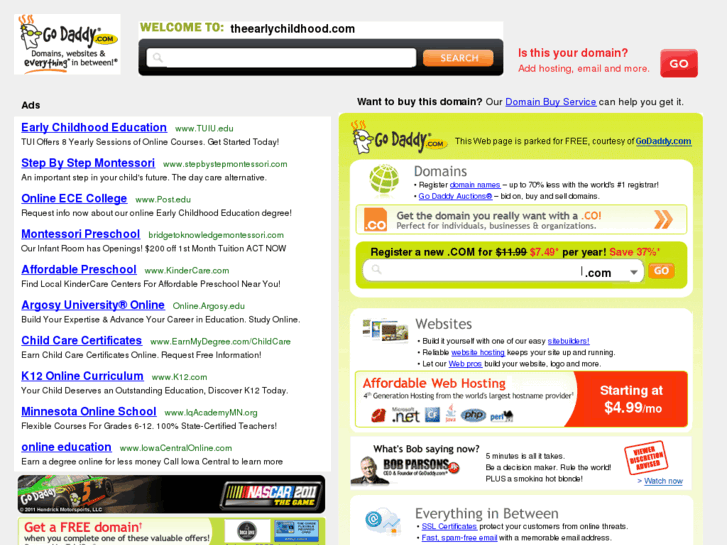

Crossroads are the most dangerous for motorcycle riders. Man is so arranged that he notices large objects in the first place. Motorcycles, due to their smaller size, are lost against the background of other vehicles.
Statistics reveal the sad facts:
 In 2546 of these accidents, the motorcycle collided with another vehicle.
In 2546 of these accidents, the motorcycle collided with another vehicle. Another factor is that drivers don't see motorcycles because they don't look for them. It is, again, in human nature to hiccup something specific. A novice driver may be told to look out for cars and trucks, and that's what they'll be looking for. Every driver must learn to look for everything that can be dangerous on the road.
Since motorcycle riders need to know the difference between road surfaces and be able to drive safely on them, you need to know what maneuver they will make in a given situation: open ground, gravel, pothole or crack, manhole, small object or animal. Drivers must adapt to the behavior of motorcyclists when they are around. Mopeds are low speed two wheeled or technical vehicles for limited use on public roads. There are three classes of mopeds, differing in maximum speed. The table below describes the requirements for operating mopeds. Class B and C mopeds must only drive in the right lane, closer to the edge of the carriageway. Class A mopeds may use any lane. All classes of mopeds are prohibited from traveling on expressways unless permitted by signs. When approaching a moped, take the same precautions as for a cyclist. 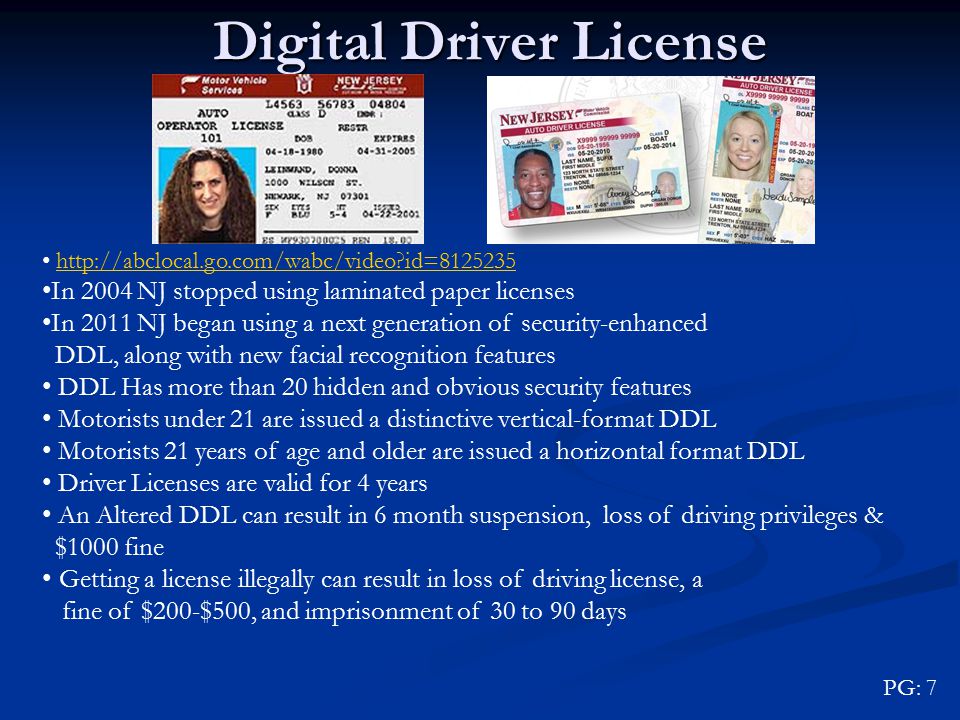
Mopeds

Requirement Class A Class B Class C Max. speed mph (km/h) 31-40 (48-64) 21-30 (32-48) 20 (32) Type of driving license ⁴ M Any ⁴ Any ⁴ Registration Need Need Need Turn on headlights while driving Should Should Should Helmet and goggles ⁵ Need Need Recommended Where you are allowed to move All lanes and shoulder Right lane or shoulder ¹ Right lane or shoulder ¹ Compulsory insurance Yes Yes Recommended - Safety responsibility ³ Yes Yes Yes Annual inspection Yes Recommended Recommended Data sheet No No No

More than 60% of fatal accidents involving cars and trucks are caused by drivers of cars. In four out of five cases, it is the driver of the car that dies.
Most of these accidents could have been avoided if drivers had known how to avoid dangerous situations when driving next to large vehicles.
Remember, trucks, buses, other large vehicles differ not only in size, they have:
Unlike passenger cars, large vehicles have deep blind spots in front of and immediately behind them. In addition, they have much larger blind spots on both sides. Heavy trucks can have a blind zone of 6 meters in front of them. Try not to be in the blind spot of the truck.
Large vehicles have large blind spots on both sides. If your vehicle is moving in this area, the truck driver cannot see you. Even if he is aware that you are there, it is more difficult for him to act in a dangerous situation.
If you are in a blind spot behind a truck, you increase the chance of an accident. Other drivers will not see your car and you are depriving yourself of visibility.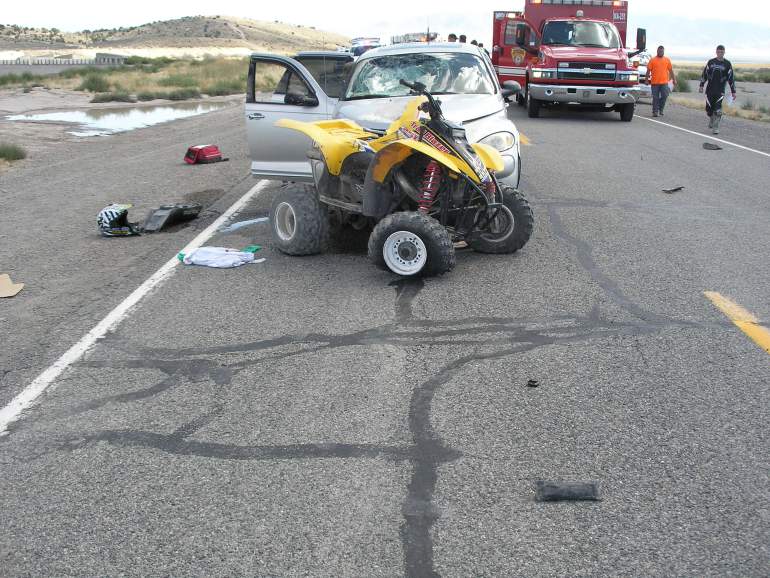
The stopping distance of a large heavy vehicle is much longer than that of a passenger car moving at the same speed. Also, a truck with a trailer has a "delay" braking, adding several meters to the braking distance. Keep a greater distance from large vehicles in front of you. If a truck is following you, give advance warning of your intention to turn or change lanes. Do not make sudden sudden maneuvers.
Trucks, buses and large vehicles are less manoeuvrable. They take longer to pick up speed, stop, and are forced to make longer turns.
You can reduce the chance of hitting heavy trucks by:

Overtaking a heavy vehicle takes longer than overtaking a car. On two-way roads, choose large gaps between oncoming traffic. Make sure you can see the entire truck in your rearview mirror before returning to your lane after overtaking. Trucks tend to lose speed on an uphill and pick up speed faster on a downhill. Keep an eye on the level of the road to understand when it is possible and when it is impossible to overtake trucks.
Do not drive close to a truck that is reversing. Sometimes the truck driver has to block traffic on the road in order to reverse to the place of unloading. Be patient. It is better to wait for the truck driver to complete the maneuver than to try to pass. You can be in a dead zone and provoke an accident.
Do not underestimate the speed and size of large vehicles approaching. Due to its large size, it may seem that it is traveling at a lower speed than it actually is. At a great distance, such transport may seem smaller than it is. On two-way highways, try to keep to the right so as not to collide with an oncoming truck.
Due to its large size, it may seem that it is traveling at a lower speed than it actually is. At a great distance, such transport may seem smaller than it is. On two-way highways, try to keep to the right so as not to collide with an oncoming truck.
When stopping at a traffic light or in front of a sign behind a truck or bus, keep a reasonable distance from them, especially if the road is uphill. Heavy vehicles may roll back slightly after stopping or before moving off.
Slow moving vehicles are marked with special signs in the form of orange triangles with a reflective surface (Fig. 6.1). These signs must be fixed on the back of construction equipment, agricultural vehicles, horse-drawn carts. The United States Postal Service also requires these signs to be installed on all rural mail delivery vehicles. Be careful when approaching slow moving vehicles and overtake them when it is safe to do so.
ATVs (ATVs) and snowmobiles are permitted by New York State law to cross expressways and local roads. Before crossing the highway, they must stop and give way to all traffic moving along the highway. Crossing the highway on an ATV or snowmobile must be at an angle of 90 °.
Riders on horseback are subject to and protected by the rules of the road. They must move one after another along the right edge of the carriageway or along the side of the road.
The law requires you to be careful around horses. When approaching them, slow down and keep a reasonable distance. It is forbidden to use the horn near the horses - it can scare them.
I have long noticed how the number of “Americans” has increased on the roads, but until I needed a car myself, I didn’t understand how profitable it is to drive a car from overseas. Having studied all the options, I want to share my experience, maybe it will be useful to someone.![]() When I was looking for information, I spent more than one hour on all sorts of forums, sites with reviews and other things.
When I was looking for information, I spent more than one hour on all sorts of forums, sites with reviews and other things.
I wanted to change my car for a long time, and then my wife began to drive, and it became clear that we needed an automatic machine, not a mechanic. This is where my search began. First of all, I looked at what the Ukrainian used car market offers. There is not enough money to take a brand new car from the salon, but I don’t want to frankly junk either. I would like a good car, and not overpay, in general, in the best traditions of the Jewish peoples.
Having shoveled all the sites like olx or ria, I realized that the prices are cosmic, and the cars are frankly old. For example, my 2012 ford focus was taken away for $7,500. I learned that in Ukraine, the law on preferential customs clearance of cars has been in force for the second year already - I was delighted, I began to look at cars in Poland and Germany. I calculated, and it turned out that if you take the car from there on your own, then clear it through customs, even taking into account this free law, the price in the end is not very different from what I saw on sale with us.
While searching, I often came across advertisements with offers like “we will bring a car from the USA”. To be honest, it was hard to believe that buying a car on another continent and bringing it here could be cost-effective. But I'm an inquisitive person, and asked about the details. It turns out that it's all about the specifics of car insurance in the United States. The car after an accident, or other damage, such as vandalism and other things, is simply redeemed by the insurance company at the average market price. In the USA, it is not possible to repair these cars, due to the peculiarities of the legislation and the work of service stations, in general, these cars go further to online auctions. And here the fun begins - setting the price for selling this car. In order not to be unfounded, I will show an example.
The photo shows all the damage to the car. In my experience, repairing it will cost 2.5 maximum 3 thousand dollars with work. And now look, as they say at the auction, Actual Cash Value (market value of a car) is $40,983, below the Estatement Prepare Cost (repair cost according to auction estimates) is $25,942.
Looked at the winning bids for lots, roughly calculated the cost of transportation, customs clearance costs, spare parts and repairs. And the result amazed me - it's about 30% cheaper (and sometimes more) to drive an "American" than to buy a used car on the domestic market.
Caught fire, of course. But how to implement it? I cannot participate in the auction on my own, I need either a company with a license in Ukraine or someone in the USA. Naturally, it is easier to turn to a local company; with the adoption of this law, they have grown like mushrooms. But the amount is rather big, and to give your hard-earned money to an unknown company, frankly, is dumb. Also, everyone works on a full prepayment and wait at least a month, or even more. In general, I decided to look for someone I know in the USA. He began to wool on classmates, fellow students, wrote in social networks, called.
In general, whoever seeks will find, it turned out that a classmate has been living in the USA for a long time.
Negotiated, agreed to help, especially since he bought a car more than once for relatives and friends from Ukraine. From him I learned a lot of important things that are not written on the websites of our companies that import cars from the USA. For example, it is better to buy a car near the state of New Jersey, so delivery to the port will be cheaper. If you buy in New Jersey itself, delivery costs about $ 200, and it can cost up to $ 800 to transport from the central states, it is not practical to look in remote states, delivery will be very expensive and it is already unprofitable to drive a car. He advised not to take a car from megacities, since in large cities they have aggressive reagents for roads and the car will have more wear and tear.
Also, a classmate told about possible fraud. At these auctions, not only insurance companies have the right to sell purchased cars, but also individuals. There were cases when such sellers took a dead car and made such a dummy out of it. Inside - trash, and the hood, fenders - intact. It's impossible to tell from a photo. Up to 10 photos are added to the lot, and you need to determine the condition of the car and the cost of future repairs from these photos. Of course, there are special appraisers or inspectors who can test the car, give their opinion, for a fee, of course. Even if they are small, with general risks - only $ 200, but you need to look at 10 options. In my case, I chose a budget car, I decided to do without an appraiser.
Inside - trash, and the hood, fenders - intact. It's impossible to tell from a photo. Up to 10 photos are added to the lot, and you need to determine the condition of the car and the cost of future repairs from these photos. Of course, there are special appraisers or inspectors who can test the car, give their opinion, for a fee, of course. Even if they are small, with general risks - only $ 200, but you need to look at 10 options. In my case, I chose a budget car, I decided to do without an appraiser.
I will share with you, for clarity. Well made doll.
In the right corner there is a “current bid” which is the current bid, $18,600. I am sure it will go under the hammer for no less than twenty-five mowers.
Now attention, the same car has already been sold on this site before
I chose the car for ages, studied all the characteristics, really wanted to buy inexpensively and without serious damage. As a result, I narrowed the circle to Kia Optima (Kia Optima), Hyundai Sonata (Hyindai Sonata) or Mazda 6 (Mazda 6).
As a result, I narrowed the circle to Kia Optima (Kia Optima), Hyundai Sonata (Hyindai Sonata) or Mazda 6 (Mazda 6).
A classmate also helped me to find out the history of the car, with all the owners, the real mileage, and check the documents. There are special sites for this, like Carfax and AutoCheck, but this is if you speak English well. In short, I was lucky with a classmate, he rejected about 20% of the options I chose.
I made an agreement with a small transport company, fortunately the manager was also Russian-speaking, it remained for our bet to win. For two weeks we unsuccessfully placed bets, but they were interrupted all the time either by locals or Georgians (apparently this chip with customs clearance also works for them).
And finally, the holiday came on my street, and our bet won. I put a maximum of 3600, and they took the total for 3200. But how lucky, if a very cheap bid wins, the seller may refuse to sell and put the car up for auction again. True, he will have to pay something like a fine, but this happens. Therefore, I waited with trepidation for confirmation of the transaction from the seller. When we received it, a classmate made an invoice, according to which I paid.
True, he will have to pay something like a fine, but this happens. Therefore, I waited with trepidation for confirmation of the transaction from the seller. When we received it, a classmate made an invoice, according to which I paid.
This is how the car looked at the time of purchase
Good equipment, 2015, 2.0L engine, 25k miles. It can be seen that the former owner treated the car with care - regular oil changes, and even brand new R18 tires, for a second.
In the port, the car is additionally photographed from all possible angles. Here you get more detailed information about the condition of the car, and you can estimate how much the repair will cost, and even start picking up spare parts based on the photo. It takes about two weeks to deliver a car to the port.
Then they loaded it into a container, went through customs and sent it on a steamer. The container with the machine can be tracked in real time. Delivery to Odessa took 38 days (with reloading in Greece). For customs services, the help of a broker, and the container itself gave 1200 dollars. Now the price is about 800-1000$.
For customs services, the help of a broker, and the container itself gave 1200 dollars. Now the price is about 800-1000$.
In Odessa, all cars from the container are placed in the forwarder's parking lot. The stay of the car in this parking lot is paid separately: 1st day - $ 8, then $ 4 each. At the same time, customs clearance can last three days, or maybe seven. Mine was completed in four days.
How to estimate the cost of customs clearance? The Internet is full of online customs clearance calculators, everything is convenient and simple. The formula is as follows:
My car at the auction cost $3,200 + $553 auction commission (may differ at different auctions) + $400 shipping.
The total amount is 4153 dollars. From her customs and considers the cost of customs clearance, it turns out - $ 1871.07. There is also a tax in the PF - 124.59$, it is already paid directly to the MREO
Then the car is sent by autocart to your city. I knew the arrival time of the car carrier and arrived in advance to wait for my dream. The first thing that immediately caught my eye was that the rear bumper and fender were damaged during transportation. A classmate warned me that this happens, the loaders are not responsible for damage, so they are not too careful with the cars. It was possible to insure the car against damage during transportation, but in my case these were additional costs that I did not count on, and fortunately, repairs here cost 80 dollars, no more. Insurance would be much more expensive.
I knew the arrival time of the car carrier and arrived in advance to wait for my dream. The first thing that immediately caught my eye was that the rear bumper and fender were damaged during transportation. A classmate warned me that this happens, the loaders are not responsible for damage, so they are not too careful with the cars. It was possible to insure the car against damage during transportation, but in my case these were additional costs that I did not count on, and fortunately, repairs here cost 80 dollars, no more. Insurance would be much more expensive.
After examining the condition of the car more carefully, I was satisfied. Inside, the smell of a new car, the mats are new, there is no rust on the undercarriage and the bottom - a machine from a state where precipitation is not often.
There were zeros of gasoline in it, it is drained before placing the car in a container; the battery, even the batteries on the key fob - everything is discharged. Start to get to the car wash and service station was not easy.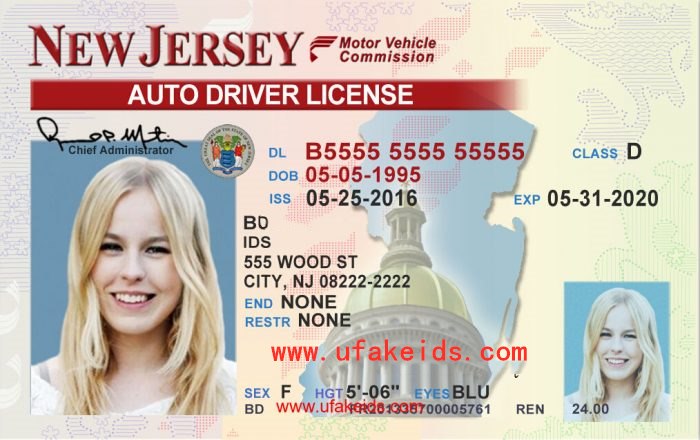 Dismantled at the service station all the broken parts, made troubleshooting. Some parts were sent for restoration.
Dismantled at the service station all the broken parts, made troubleshooting. Some parts were sent for restoration.
I decided not to order spare parts in advance and bought everything after the car arrived. Now I know that the spars will not start to pull until there are all body parts. Therefore, the car was waiting for its turn for another 2 weeks. Came all the parts, a little stretched spars. Collected the car, painted all the details in a week.
Further mandatory certification and MREO for registration.
Machine already with numbers
To say that I'm happy is to say nothing. My dream - HYUNDAI Sonata America rides 2.0, GDI engine (245 hp)
To sum it up:
